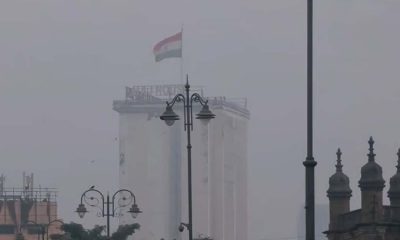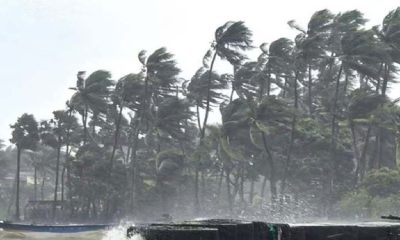Maharashtra
Mumbai Metro 6 line: Maha Govt urges Centre to provide 15 hectare land free of cost for carshed at Kanjurmarg
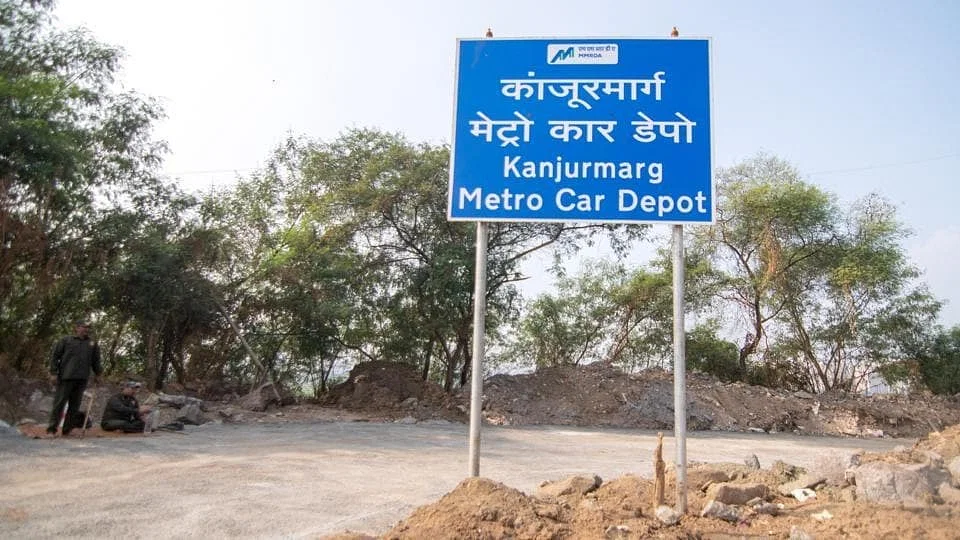
Mumbai: In a significant move, the Shinde Fadnavis government has made a fresh appeal to the Centre to give no objection certificate for making available at free of cost 15 hectare of land for the construction of Metro 6 (Swami Samarth nagar-Vikhroli) carshed at Kanjurmarg in North East Mumbai. This is a fresh request made recently by the state government after it has decided to develop carshed for Metro 3 (Cuffe Parade-Bandra-SEEPZ) at Aarey Colony. The Uddhav Thackeray-led Maha Vikas Aghadi (MVA) government had earlier urged the Centre to make available a total of 43.76 hectares land at Kanjurmarg for combined carshed for Metro 3, 4 and 6. However, the land was not transferred as the MVA government and the BJP-led government at the Centre were at loggerheads.
Collector had issued order in 2020, withdrew later
On October 1, 2020, the Mumbai suburban district collector had issued an order handing over the possession of 102 acres of land to the Mumbai Metropolitan Region Development Authority (MMRDA) for the construction of an integrated car shed for the Metro. However, the MVA government on August 30, 2022 told the Bombay High Court that the Mumbai suburban district Collector has withdrawn an earlier order allotting land in Kanjurmarg area for a carshed of Mumbai Metro. Thereafter, the court disposed off a Union government’s petition challenging the collector’s 2020 order.
Proposal for metro 6 carshed sent to centre, no decision yet
Incidentally, after the Shinde Fadnavis government decided that the Metro 3 carshed will come up at Aarey Colony lifting the stay granted by the MVA government, the MMRDA had requested the state government to provide land at Kanjurmarg for the construction of Metro 6 line carshed. Thereafter, the state government sent its proposal to the Centre in this regard but there has been no decision yet.
A senior urban development minister officer told the Free Press Journal, ‘’The government earlier had sent a proposal to the Centre for handing over a total of 43.76 hectare of land in Kanjurmarg comprising 37.32 hectare from land number 657 and 6.44 hectare from land number 6.44 hectare for a combined carshed for Metro 3, 4 and 6 lines. Now, the land requirement is reduced to 15 hectare as the Metro 3 carshed will come up in Aarey Colony. The government is pursuing its proposal with the union commerce ministry.’’
Metro 6 line to connect Eastern and Western highways
The 14.4 km long Mumbai Metro line 6 (Swami Samarth Nagar-Jogeshwari-Vikhroli-Kanjurmarg) will connect Eastern and Western Express highways through Jogeshwari Vikhroli Link Road (JVLR) through 13 metro stations with an estimated cost of ₹6,700 crore. The metro line will facilitate commuters to reduce the travel time on the route by 35-45 minutes.
The 13 metro stations will include Swami Samarth Nagar, Adarsh Nagar, Jogeshwari (W), JVLR, Shyam Nagar, Maha Kali Caves, SEEPZ Village, Saki Vihar, Rambaug, Powai Lake, IIT Powai, KanjurMarg and Vikhroli (EEH)
Maharashtra
Maharashtra Waqf Board approached the Tribunal regarding extension of date, don’t worry, 100% registration is assured: Chairman Sameer Qazi
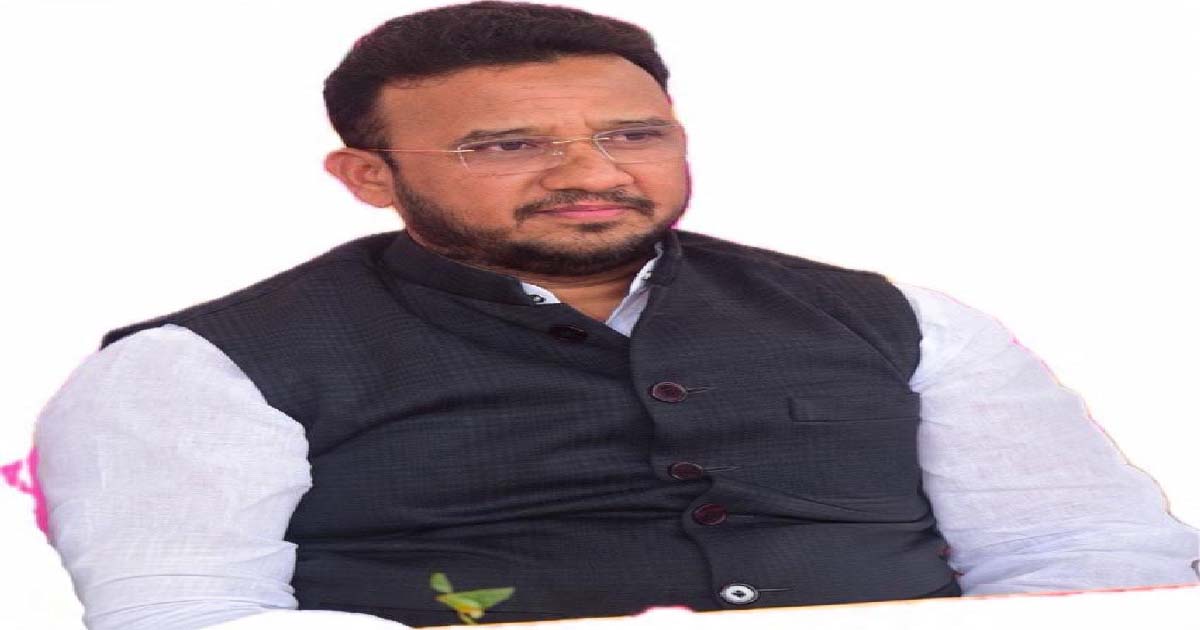
Aurangabad: (F.A.) The last date for registration on the UMID portal for all registered waqf organisations in Maharashtra, including mosques, dargahs and graveyards, was today, December 5, 2025, which has now expired. Although most of the waqf organisations in Maharashtra have been registered on the portal, some organisations are still missing out due to unavailability of records or other paper errors. In view of this situation, Maharashtra State Waqf Board President Sameer Qazi has appealed to the concerned trustees, trustees and the Muslim community not to panic or believe in any rumours. He has confidently said that: The Waqf Board will complete the registration of every institution. Although the Supreme Court has refused to extend the date, it has allowed the Waqf Tribunal (Waqf Court). The State Waqf Board has approached the tribunal and we are confident that justice will be done there and the deadline for registration on the UMID portal will definitely be extended. Chairman Qazi expressed his firm resolve and further said that the board will not sit in a hurry without the registration of every Waqf institution in the state being completed.
Maharashtra ranks second in the country: 80 percent registration completed.
The registration of all organizations related to the Waqf Board has been completed at a fast pace on the UMID portal. The state of Maharashtra ranks second in the country in terms of registration of Waqf institutions. There are a total of 36 thousand registered Waqf properties in Maharashtra, out of which about 30 thousand (80 percent) properties of organizations have been successfully registered on the UMID portal. All the officers and staff of the Waqf Board have made additional arrangements and completed the registration process. Not only this, but 300 young technicians were hired at the Hajj House in Chhatrapati Sambhaji Nagar to expedite registration on the Omid portal, which is a commendable effort by the board.
Waqf Tribunal issues urgent notice to the central government, seeks response by December 10
Immediately after the Supreme Court’s direction, the Maharashtra Waqf Board approached the Waqf Tribunal. The tribunal has issued a notice to the central government while hearing the matter urgently. The notice asks the centre: “Why should the deadline not be extended?” and has directed it to file its reply by December 10. Due to this urgent action and notice by the tribunal, there is a strong possibility of an extension in the deadline, which has brought a big relief to the waqf institutions.
Don’t pay attention to rumors, time has not been extended.
A statement by Union Minority Affairs Minister Kiren Rijiju was circulating on TV and social media throughout the day today, in which he said that although the trustees have not received any relief, there is hope of getting an extension in time from the tribunal. He also said that no penalty will be imposed on the institutions that approach the tribunal. President Sameer Qazi, while explaining this statement, said: The Minister has not extended the time for uploading on the portal, but has only set a time of three months for checker and approval for those institutions that have already been registered. He explained that false news about the extension in time is being spread on social media, so do not be fooled by any kind of hesitation and until the official extension is done, the institutions must complete the uploading process.
Maharashtra
Mumbai Weather Update: AQI At 183 In ‘Unhealthy’ Category As Temperature Hovers Around 27°C
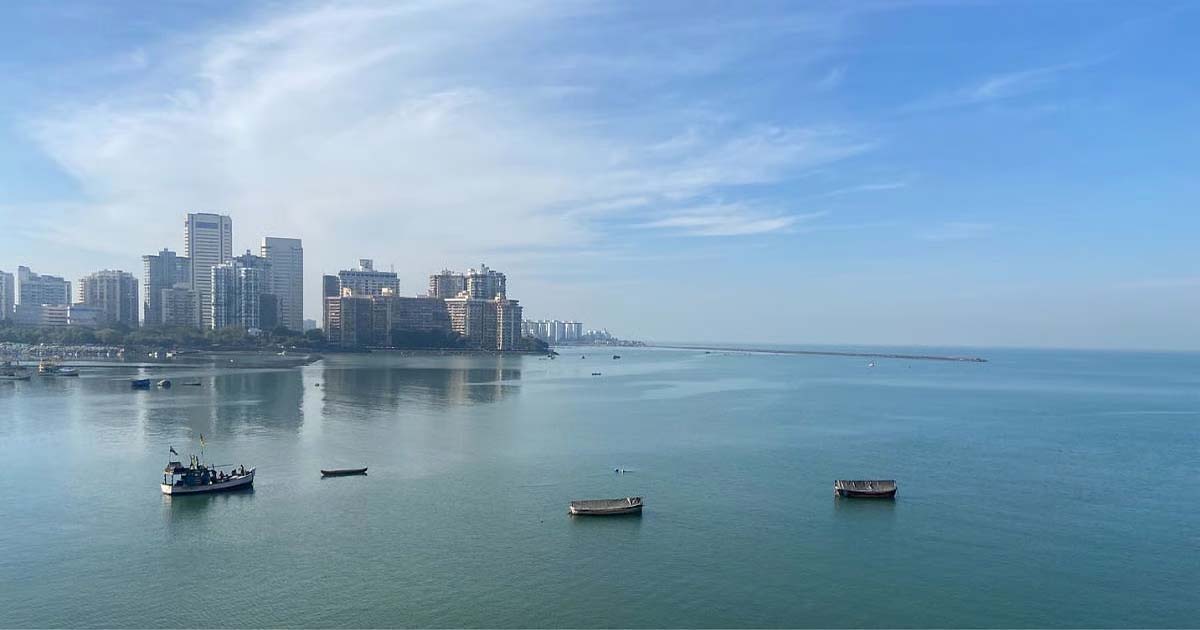
WETHER
Mumbai’s air quality deteriorated to the unhealthy category on Friday morning, even as the city witnessed clear and sunny weather, according to real-time air quality monitoring data updated at 8.30 am. As per aqi.in, the Air Quality Index (AQI) stood at 183, placing it well within the unhealthy range and raising concerns for vulnerable groups across the city.
Data showed PM2.5 levels at 100 micrograms per cubic metre and PM10 levels at 130 micrograms, both well above safe limits prescribed by health authorities. Elevated particulate matter is known to penetrate deep into the lungs, posing serious health risks, especially to children, the elderly and those with respiratory or cardiac conditions.
Other pollutants, including carbon monoxide at 266 parts per billion, nitrogen dioxide at 16 ppb, ozone at 14 ppb and sulphur dioxide at 7 ppb, remained within controlled limits. However, high particulate matter alone is sufficient to cause breathing discomfort and eye irritation.
The city recorded a temperature of 26 to 27 degrees Celsius, with humidity around 54 per cent and wind speed at nearly 16 kmph. While the weather remained pleasant with no rainfall forecast, the atmospheric conditions failed to prevent the accumulation of fine dust particles in the lower air layers.
The seven-day outlook shows maximum temperatures ranging between 28 and 31 degrees Celsius, with clear skies continuing through the week. Despite the sunshine, pollution levels are expected to remain volatile due to vehicular emissions, construction dust and seasonal factors.
Doctors advise residents to limit prolonged outdoor exposure, especially during morning and late evening hours when pollution concentration tends to be higher. People experiencing coughing, throat irritation or breathlessness are urged to seek medical attention immediately. Use of masks, air purifiers indoors and adequate hydration has been strongly recommended.
Environmental groups have once again urged civic authorities to intensify road dust control, monitor construction activity strictly and regulate traffic emissions. Citizens are also being encouraged to use public transport and avoid unnecessary vehicular travel during peak hours.
With winter setting in, experts warn that Mumbai may witness more frequent unhealthy air days unless immediate mitigation steps are implemented.
Maharashtra
Mumbai: Crime Branch raids travel agency… Fraud in the name of sending abroad illegally, police action, case registered
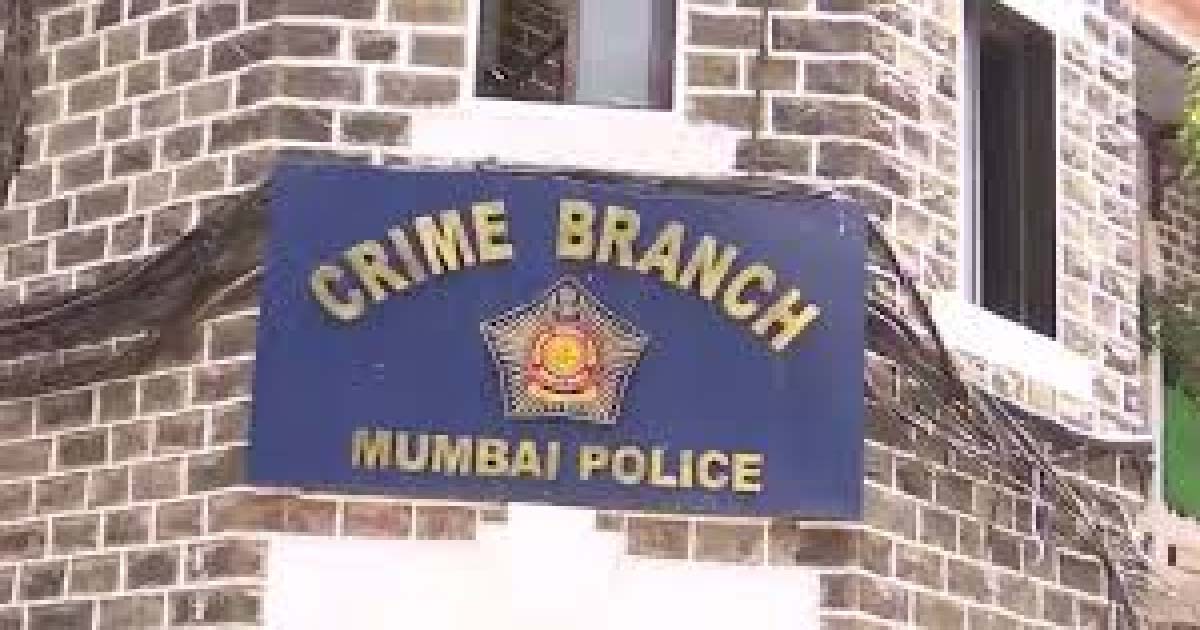
Mumbai: Several travel agencies in Mumbai’s Nagpara area are defrauding people under the guise of sending them abroad. Such a complaint was received by the Mumbai Police Crime Branch. These agencies do not have any permission from the Ministry of External Affairs and they charge huge amounts of money from people in the name of sending them abroad for jobs. Under the influence of the Ministry of External Affairs, the Protector of Emigrants, Bandra, in collaboration with the Mumbai Crime Branch unit, conducted a joint operation. A raid was conducted on 9 offices in KD Building, Nagpara, which were working to send them abroad without any permission. A complaint was also received regarding them. 238 passports, several documents, offer letters, visiting cards, letters used for foreign use and other documents were also recovered from their offices. The police have registered a case against them under the Passport Act, including the Immigration Act, in Nagpara. The police are investigating the matter further. This operation was carried out by DCP Raj Tilak Roshan on the instructions of Mumbai Police Commissioner Deven Bharti.
-

 Crime3 years ago
Crime3 years agoClass 10 student jumps to death in Jaipur
-

 Maharashtra1 year ago
Maharashtra1 year agoMumbai Local Train Update: Central Railway’s New Timetable Comes Into Effect; Check Full List Of Revised Timings & Stations
-
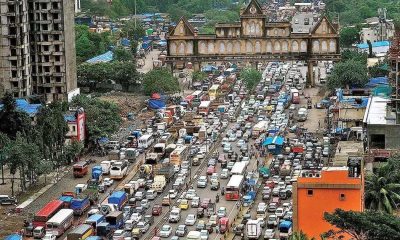
 Maharashtra1 year ago
Maharashtra1 year agoMumbai To Go Toll-Free Tonight! Maharashtra Govt Announces Complete Toll Waiver For Light Motor Vehicles At All 5 Entry Points Of City
-

 Maharashtra1 year ago
Maharashtra1 year agoFalse photo of Imtiaz Jaleel’s rally, exposing the fooling conspiracy
-
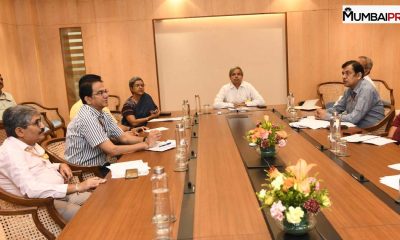
 National News1 year ago
National News1 year agoMinistry of Railways rolls out Special Drive 4.0 with focus on digitisation, cleanliness, inclusiveness and grievance redressal
-
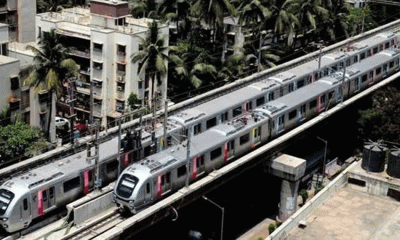
 Maharashtra1 year ago
Maharashtra1 year agoMaharashtra Elections 2024: Mumbai Metro & BEST Services Extended Till Midnight On Voting Day
-
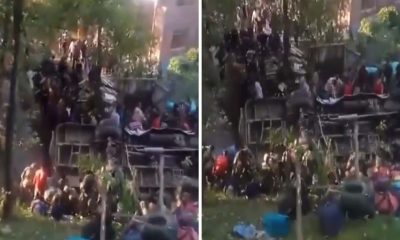
 National News1 year ago
National News1 year agoJ&K: 4 Jawans Killed, 28 Injured After Bus Carrying BSF Personnel For Poll Duty Falls Into Gorge In Budgam; Terrifying Visuals Surface
-

 Crime1 year ago
Crime1 year agoBaba Siddique Murder: Mumbai Police Unable To Get Lawrence Bishnoi Custody Due To Home Ministry Order, Says Report







